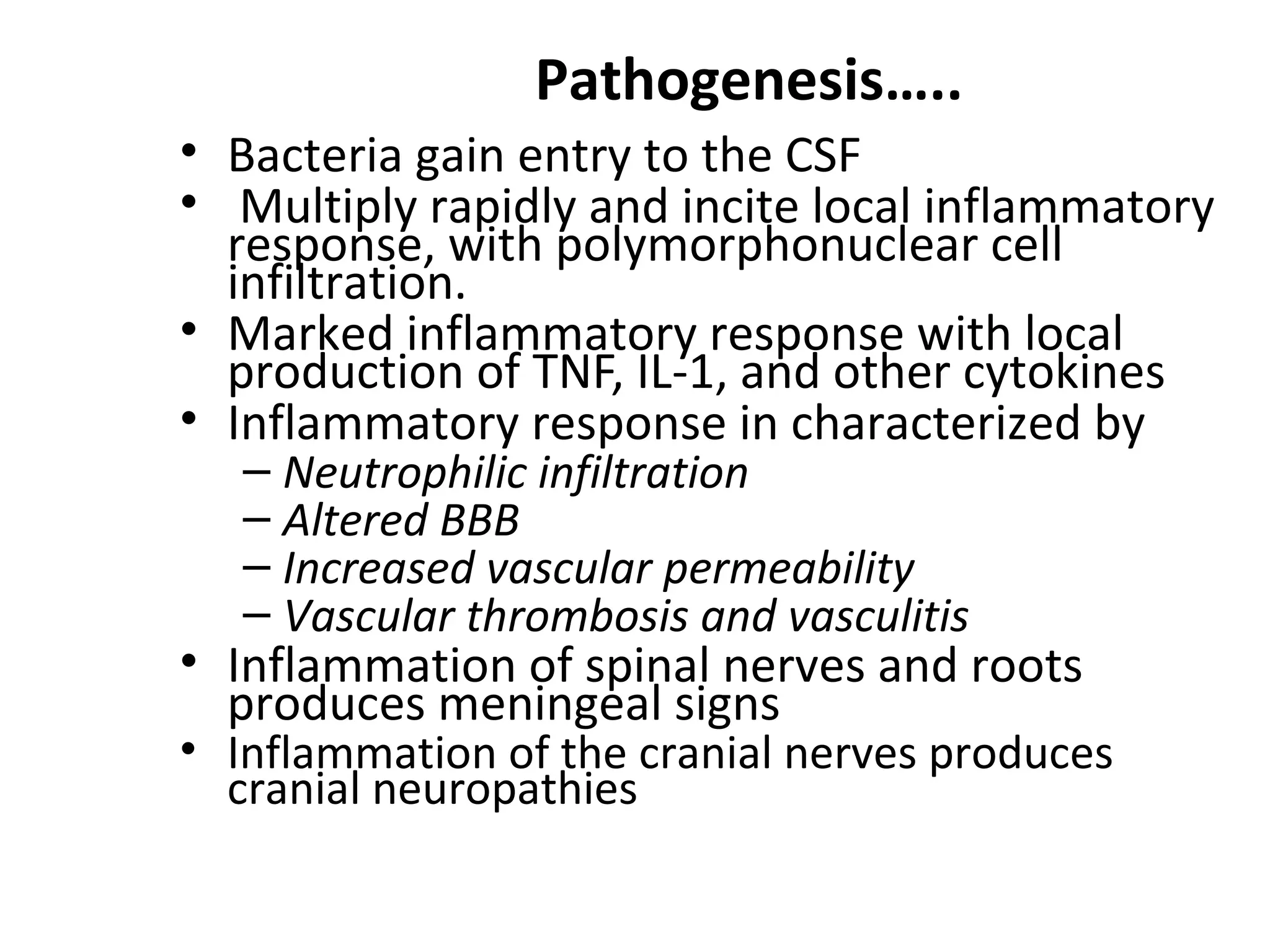Central nervous system infections can cause meningitis or encephalitis. Bacterial meningitis is commonly caused by Streptococcus pneumoniae, Neisseria meningitidis, or Haemophilus influenzae type b. It presents with fever, headache, neck stiffness, and altered mental status. Diagnosis involves lumbar puncture showing pleocytosis and low glucose in CSF. Treatment involves antibiotics, corticosteroids, and supportive care to prevent increased intracranial pressure complications.
















































